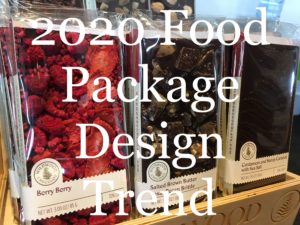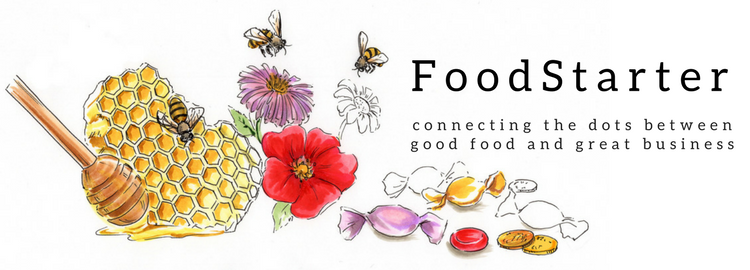This is Part 3 of a 4-Part Series: Re-imagining Good Food Business
(Here are Parts 1 and Parts 2. Written in 2020, some of the information may be out of date so check for the latest knowledge before making real-life business decisions.)
“It’s far, far too soon to talk about trends in how we’ll eat and drink after Covid-19, and we won’t deliver any sunnyside-up proclamations about how one side of the food chain or the other will prevail.” – TheCounter.org, April 22, 2020
There are foods that sold well before and after the pandemic and others that sell well when the country is sequestered at home. The Holy Grail of foods intersects these and is good for people, the planet, and profits..
Susan Schwallie. executive director of food and beverage consumption for the NPD Group, expected, as of April 2020, that demand for in-home staples would continue because of the economic reality.
P&G Chief Financial Officer Jon R. Moeller agrees, saying that shoppers in the U.S. “will likely become a forever altered health, hygiene and cleaning focus…There may be an increased focus on home, more time at home, more meals at home, more cleaning at homes.” The same Wall Street Journal article quoted a Unilever executive reporting increased demand for brands such as Knorr soup cubes, Hellmann’s mayonnaise and Pot Noodle instant noodles.
Will the surge in old-time, CPG brand sales continue? Or will younger consumers start shopping again for products labeled organic and / or that have sustainable practices, ingredients, and packaging (according to SPINS). We will always benefit from better-for-you versions of packaged foods at the right price. Given how COVID-19 highlighted the perils of poor health, companies that can help consumers eat more healthily will be doing a public service!
Top Trends from the 2020 Winter Fancy Food Show
Thousands of people from around the world gathered in January—in person! without masks!—to sample food, talk up close and in person, and close deals. Trendspotters roved the floor of the Fancy Food Show in San Francisco eyeing flavors and products to determine what the year might hold for food sellers, buyers, and makers.
Here are a few thoughts on how these trends reflect what happened in March, 2020 and beyond:
Trend #1: Regional Cuisines of Asia
Condiments, snacks, and ingredients in interesting Asian flavors make it easier than ever to make restaurant-quality food at home and for restaurants to serve adventurous palates.
Angkor Foods is a perfect example of a company with a diverse line of condiments and spices that helps consumers make restaurant-quality Cambodian food at home. My gut reaction to a Saveur story titled “How to Make the Real Pad Thai” was envisioning Angkor Cambodian Foods’ Lemongrass Paste. This shelf-stable jar of minced lemongrass makes cooking authentic Southeast Asian dishes a reality, without the hassle of procuring and preparing stalks of lemongrass.
More Restaurant Quality Home Cooking Ideas
“Getting rid of onions and garlic in my household would be really hard,” mused a podcaster from The Hartman Group. I agree. They are “everything.” Yet, garlic and onions are colossal hassles to work with even if you buy the garlic pre-minced or dry then fry it.
When toasted or fried and combined on a bagel, or in a jar for dolloping, well, there’s almost nothing better than a garlic chile crunch. Perhaps that’s why Trader Joe’s came out with such a product, years after Chile Crunch from one-woman business Chile Colonial had proven the addictive quality of a chile flake / crunchy garlic combo. Yes I want some now even though it’s breakfast time!
Then again, ready-to-use, affordable caramelized red onion could revolutionize home cooking forever. (Imagine, caramelized red onions in your refrigerator all the time!)
Even B.C. (Before Coronavirus), food producers set up to serve multiple channels with the same food had the right idea. Zesty-Z Za’atar, a tangy, thyme-based Middle Eastern condiment, is another example of a company solving a problem for foodservice and home chefs.
What problem can you solve for home chefs that serves 80 percent of their cooking needs—or perhaps solves 20 percent of people’s needs for which they will pay handsomely? What do you hate cooking from scratch that can be packaged as a shelf-stable, easy-to-ship product?
Trend #2: Oat Milk Takes Dairy-Free Center Stage
As Seinfeld might have said: “What’s’ the deal with oat milk?” Nielsen data for the 52 weeks ending March 7 showed that retail sales of oat milk (up 347.1 percent) were five to six times higher than those of dried beans and rice, outpacing even household items like rubbing alcohol (up 253.8 percent) and bath & shower wipes (up 253 percent). Only hand sanitizer (up 470 percent) and aerosol disinfectants (up 385.3 percent) saw bigger increases during the period.
Oatly, whose organic oat milk debuted at Expo West show just a few years ago, became the darling of baristas seeking dairy-like, non-dairy foaming “milk.” Coffee drinkers love it. Plus, we can’t deny the comforting association oats have. Oatmeal. Oatmeal cookies. No allergens to worry about. None of that baggage we associate with soy (Isn’t it bad to consume too much?) and almonds (Don’t they use a lot of water?).
Shoppers cleaned out the oat milk supply. Just as suddenly as it disappeared, it re-appeared. What I wonder is could a dry oat milk concentrate take off just like instant oatmeal?
Trend #3: Plants as Plants
Capturing the harvest in its natural state, frozen or dried, is so important for food security. Aging and ugly produce is made for smoothies, soups, and stir fries. So why did Coca-Cola ax Odwalla in 2020? They say they couldn’t make it work. What seemed like a natural to me is going into refrigerated, bottled soup brands like Tio Gazpacho.
The producers tapping into the “plants as plants” food trend could not have timed their launches better: Fruits and vegetables ready-to-eat or to cook with, preserved as frozen or dried, In fact, my freezer is full of Pitaya Dragonfruit chunks packed in convenient, resealable pouches along with organic mango, coconut, spinach, and other produce.
Imperfect Foods experienced huge growth in the company’s “ugly produce” delivery business—so much so that they received a huge chunk of funding and expanded to include aging food and meat products. Dozens of job postings reflected their success yet as the economy began re-opening.
Plant-based Versions of Popular Foods
First came the cauliflower rice craze. Riced cauliflower as rice. Cauliflower as pizza crust (remarkably delicious). Then RightRice, from the founder of PopChips. It looks like rice, acts like rice, and tastes remarkably rice-like. The nutrition is the best part. RightRice delivers more than double the protein, five times the fiber with a reduction of almost 40 percent fewer net carbs than traditional white rice—thanks to a recipe with 90 percent blended vegetables (lentils, chickpeas, and green peas).
The company launched with Whole Foods and Amazon in 2019 to rave reviews and brisk sales. RightRice hits the most popular dietary checkmarks:
The more consumers look to stock nutrition-packed food, expect innovative rice alternatives like those Fast Company wrote about to be popular sellers—and good food businesses.
Trend #4: Prebiotic-Rich Functional Beverages
For years, probiotic-rich products in the form of yogurt and sauerkraut grew like mad. Then around 2018, came “probiotics and prebiotics.” Probiotics appear in fermented foods such as yogurt, kimchi, pickles, and sauerkraut. Prebiotics are in foods such as whole grains, bananas, greens, onions, garlic, soybeans and artichokes. Together, they are key to gut health.
What’s really trending are drinks like those that Neuro Brands made with real foods like ginger and apple cider vinegar and that tout claims such as vegan, gluten-free, certified kosher and low-calorie.
Before you think “just add vodka,” consider “the world’s first shelf-stable probiotic hard kombucha,” Flying Embers Hard Kombucha. Packing a 4.5% to 7.2% alcohol by volume (ABV) punch, this brand turns to an adaptogen root blend of Ashwagandha, Turmeric, Ginger and Astragalus for health benefits beyond the probiotics. The dry fermentation process gives the hard kombucha a perfectly balanced natural sweetness with zero sugar. This brand is certified organic, gluten-free and vegan. The current line includes six flavors: Ancient Berry, Lemon Orchard, Ginger & Oak, Pineapple Chili, Black Cherry & Grapefruit Thyme.
Will such drinks go mainstream? Neuro says the line is carried in 70,000+ retailers nationwide including Walmart, Target, Kroger, Albertsons Safeway, Wegmans, H.E.B., Amazon, CVS, Rite Aid, Quiktrip, Racetrac, and 7-Eleven.
Trend #5: Charcuterie and Deli Meat Makeover
This trend reflects the growth of vegan “butcher” shops and multi-year move to make deli and snacking meats free of chemical preservatives and, better yet, snackable.
Pasture-raised, grass-fed jerkies and sticks filled my larder—foods I could eat during COVID-geddon and after, when happily traveling again. Or if an earthquake felled us.
Shelf-stable, savory protein snacks are easy to store and ship. The more the merrier!
Trend #6: Mocktail Culture
Mocktails were projected to be a 2020 trend. Of course this was before shelter-in-place; nary a mocktail graced my Instagram feed.
Will future Dry Januarys take hold or will the thought of not drinking alcohol for a month signal a quaint trend of the past?
Missing From the Drink List: Hard Seltzer
If you’re thinking of getting into the fizzy alcohol category, read this Nielsen report on the state of hard seltzer. This drink is so popular that several, dedicated hard seltzer festivals were slated for 2020.
What’s remarkable is that of consumers who identify as hard seltzer drinkers, more than half (51%) said they are actively choosing seltzers over their normal drink of choice when they’re out of the house, with 52% selecting hard seltzer instead of beer and 40% doing so instead of cocktails. It’s no wonder this new category is already seeing billions of dollars in sales.
Riding a similar trend is G’s Hard Ginger Beer whose founder Donna Katz gained experience as a winemaker. When she began fermenting with ginger for her own digestive purposes, she added real ingredients. Donna realized that turning a ginger beer into a naturally low-calorie, organic hard ginger beer was an untapped opportunity.
Her compelling pitch to a group of investors revealed that 50 percent of the population doesn’t drink beer and that her solution provides a lower alcohol option than hard kombuchas and hard seltzers. “It’s not about getting a bigger slice of the pie,” she said. “It’s about making the pie bigger.”
The Other Alcohol Disruptor
Craft distillers have blanketed the nation. The hand sanitizer shortage inspired distilleries nationwide to put the hooch on hold and produce disinfecting products. Split Rock Distillery in Newcastle, Maine lured my sister to trek two hours to score sanitizer for her medical practice, in large part due to the charming branding and apothecary-style glass bottle. California-based IZO Agave Spirits shifted mezcal production in Mexico to agave-based hand sanitizer, all for donation to locals. Even EO fully pivoted from its popular line of natural bath products to focus on hand sanitizer production.
Will regional, naturally scented hand sanitizers and rubbing alcohol be the next great opportunity for distillers? Probably not. Many industrial distilleries in the U.S. can produce millions of gallons of alcohol. Hopefully they are producing back-stock, based on 2020’s shortage. Future generations may share the craft-distilled hand sanitizer stories as “wartime” lore.
Trend #7: Sparkling and Global Teas
Fizzy, botanical ice teas are an alternative to kombucha. This is one of those “of course” product categories, especially as fizzy “nitro” cold brew coffee took off several years ago. Why didn’t “we” think of this years ago?
Trend #8: Sustainability-Driven Product and Packaging Development
 This trend clumps together products that focus on regenerative or upcycled ingredients—such as Renewal Mill flours made from cast off pulps from processes like tofu making; chips made from “ugly potatoes;” and Melissa Martinelli’s whey-based drinks which tie into the trend that, according to her pitch, 83 percent of consumers take the environment into consideration when buying. (Relishes, juices, and drinks are of course other long-time uses of ugly and aging produce. Again, marketing genius strikes.)
This trend clumps together products that focus on regenerative or upcycled ingredients—such as Renewal Mill flours made from cast off pulps from processes like tofu making; chips made from “ugly potatoes;” and Melissa Martinelli’s whey-based drinks which tie into the trend that, according to her pitch, 83 percent of consumers take the environment into consideration when buying. (Relishes, juices, and drinks are of course other long-time uses of ugly and aging produce. Again, marketing genius strikes.)
The potential of seaweeds and algae for truly meltable “bio-plastic” packaging is most intriguing. Around the world, startups like Loliware and Notpla are turning these elements into home-compostable products. This aspect of the packaging industry is truly exciting.
The old-fashioned practice of returning organic milk bottles to the store for pick-up and re-use by dairies hit some roadblocks in the quest to avoid complications and minimize contact in stores.
Your Competition May Not Be Other Brands
Grocers and food entrepreneurs thinking of making food staples should note that store brand / private label foods such as Whole Foods 365 Organic, Kroger’s Simple Truth Organic® and Costco’s Kirkland Signature Organic no longer play second fiddle to branded products.
 A Hartman Group Organic and Beyond 2020 report found that “consumers value organic and natural private label brands for their broad availability, quality associations, and lower price points.” An astonishing 83 percent of all consumers agree that organic store brands are just as good as national organic brands, and 35 percent organic shoppers say they are purchasing more organic private brands vs. one year ago.
A Hartman Group Organic and Beyond 2020 report found that “consumers value organic and natural private label brands for their broad availability, quality associations, and lower price points.” An astonishing 83 percent of all consumers agree that organic store brands are just as good as national organic brands, and 35 percent organic shoppers say they are purchasing more organic private brands vs. one year ago.
Competition from private labels is nothing new. A book by the Private Label Marketing Association (PLMA) describes how in 1880 when A&P rolled out their own brand of tea that “first the tea merchants were up in arms, and then local grocers cried “unfair competition” from the chain.” Quality of stores brands has increased over the years. The PLMA reports that in 2018, private label product sales grew by 4.4%, four times as much as national brands—a gain of $5.5 billion.
Nielsen Global Connect provides consumer packaged goods manufacturers and retailers with accurate, actionable information; they predict continued private label growth: “With more items on the shelves compared with 10 years ago, private label has consistently claimed a higher share of total organic sales every year, and this evolution could augment private label’s power amid future economic strain. Therefore, a more likely scenario this time would be organic buyers switching from name brand to private label rather than trading to conventional.”
The brand HighKey is a great example of how to compete against lower-priced, private-label alternatives. The company’s products deliver keto-friendly ingredient profiles. They serve a niche customer but are delicious, even to the non-keto concerned, similarly to foods that just happen to be low calorie or gluten free (like my famous flourless peanut butter cookies).
Thanks to their quality, HighKey finds their products featured alongside Amazon’s own private label cereals (promoted as “hot new releases” despite pricing that is similar to other cereals without clear differentiation from CPG brands).
NEXT: On to Part 4: Thinking Future Food and Your Future!






